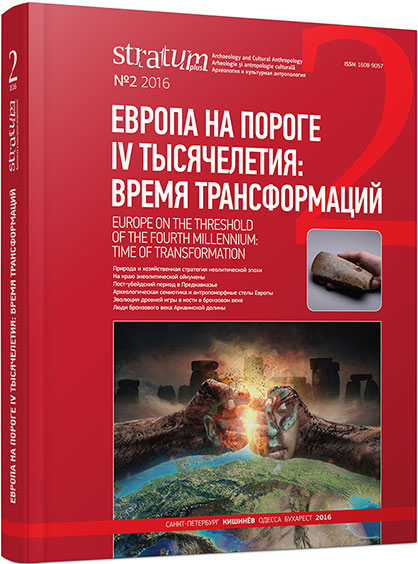Бог ночного неба в Европе позднего бронзового века
The Night Sky God of the European Bronze Age
Author(s): Dmitri V. PanchenkoSubject(s): History, Archaeology, Cultural history, History of ideas, Ancient World, History of Religion
Published by: Издательский дом Stratum, Университет «Высшая антропологическая школа»
Keywords: Europe; Bronze Age; Early Iron Age; sky god; celestial pole; all-seeing eye; one-eyed monsters
Summary/Abstract: Although the names of Greek Zeus, Roman Jupiter, Indian Dyaus belong with the semantic sphere of brightness of heaven and daylight, it can be shown that some European (and particularly, Indo-European) ethnic groups were also familiar with an idea of the night sky god. Greek, Indian, Iranian and other texts repeatedly mention the eye of the highest god, and there are Sumerian precedents for that. The idea of the eye of god can be related to symbolic representation of the celestial pole with stars revolving around it. With transition to the Iron Age, the earlier symbols and metaphors became attributes of either the Sun or Sky God who turned into the Thunderer. Various motifs of European Bronze Age decorations can be interpreted in similar way. Along with the image of the eye of god, changes in religious preferences and local pantheons also brought about the idea of one-eyed monsters such as Cyclops or Balor.
Journal: Stratum plus. Археология и культурная антропология
- Issue Year: 2016
- Issue No: 2
- Page Range: 255-264
- Page Count: 10
- Language: Russian
- Content File-PDF

